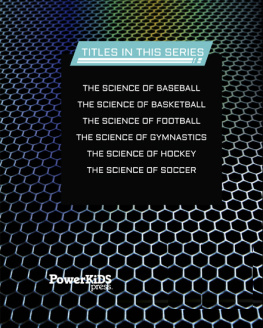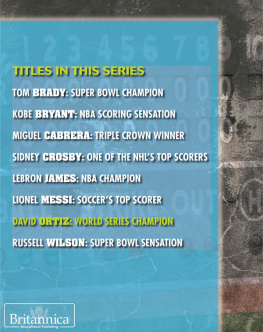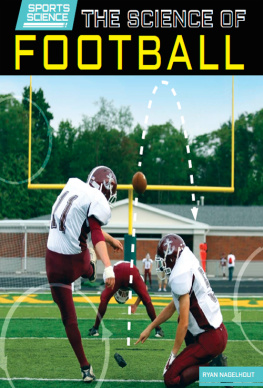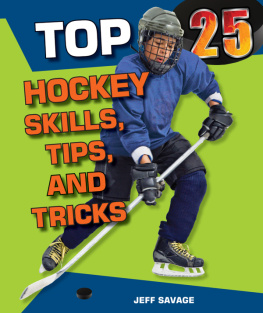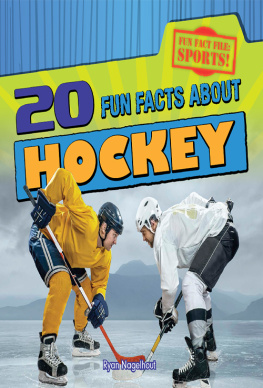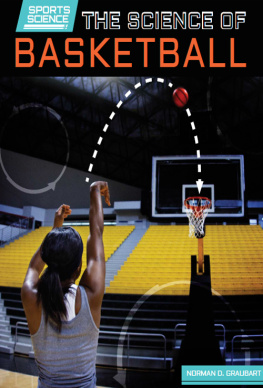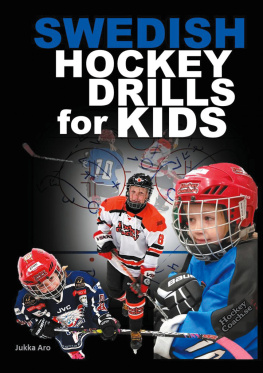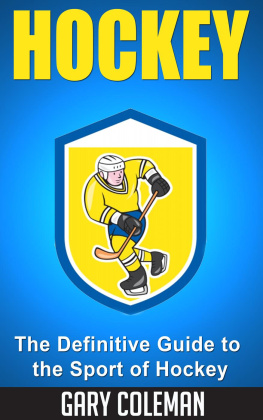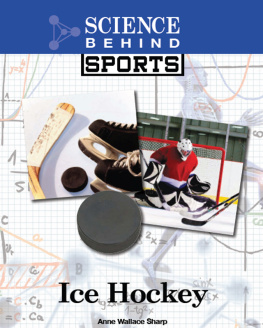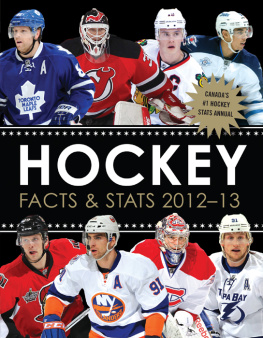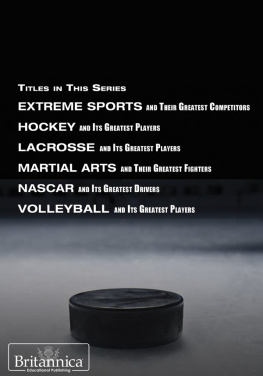Page List

Published in 2016 by The Rosen Publishing Group, Inc.
29 East 21st Street, New York, NY 10010
Copyright 2016 by The Rosen Publishing Group, Inc.
All rights reserved. No part of this book may be reproduced in any form without permission in writing from the publisher, except by a reviewer.
First Edition
Editor: Katie Kawa
Book Design: Katelyn Heinle
Photo Credits: Cover Domenic Gareri/Shutterstock.com; back cover kubais/Shutterstock.com; p. 5 Portland Press Herald/Getty Images; p. 7 (top) Paolo Bona/Shutterstock.com; p. 7 (bottom) Iurii Osadchi/Shutterstock.com; pp. 8, 17 (hockey stick) Michael Pettigrew/Shutterstock.com; p. 9 Fotokvadrat/Shutterstock.com; p. 11 Elsa/Thinkstock.com; p. 13 Vaclav Volrab/Shutterstock.com; p. 15 B Calkins/Shutterstock.com; p. 17 (main) Tumar/Shutterstock.com; p. 19 Dave Reede/First Light/ Getty Images; p. 21 photosthatrock/Shutterstock.com; p. 23 Jeff Gross/Getty Images Sport/Getty Images; p. 25 Len Redkoles/National Hockey League/Getty Images; p. 26 Pukhov Konstantin/Shutterstock.com; p. 29 B Bennett/Bruce Bennett/Getty Images; p. 30 Foto011/Shutterstock.com.
Library of Congress Cataloging-in-Publication Data
Nagelhout, Ryan, author.
The science of hockey / Ryan Nagelhout.
pages cm. (Sports science)
ISBN 978-1-4994-1070-9 (pbk.)
ISBN 978-1-4994-1107-2 (6 pack)
ISBN 978-1-4994-1143-0 (library binding)
1. HockeyJuvenile literature. 2. HockeyEquipment and suppliesJuvenile literature. 3. Sports sciencesJuvenile literature. I. Title.
GV847.25.N345 2016
796.962dc23
2015014984
Manufactured in the United States of America
CPSIA Compliance Information: Batch #WS15PK: For Further Information contact Rosen Publishing, New York, New York at 1-800-237-9932
CONTENTS
Hockey is a fast game full of huge hits, big saves, and amazing goals. Some hockey players can shoot the puck so it travels more than 100 miles (161 km) per houra scary thought if its your job to stop it!
Hockey is different from other sports because it features players with sharp blades on their feet zipping around on a sheet of ice. You need to be tough to play hockey. You also need to be smart. Examples of science are everywhere in a hockey gamefrom the way the puck moves to the equipment, or gear, used to play the game. Knowing the science behind the sport can help you play better and also stay safe.
Physics is one branch of science you can see in action in a hockey game. Physics is the science of energy and how it interacts with matter.
KINDS OF HOCKEY
HOCKEY CAN BE PLAYED ON MANY DIFFERENT SURFACES, INCLUDING GRASS AND CONCRETE. HOWEVER, ICE HOCKEY IS THE MOST FAMOUS VERSION OF THE SPORT. IN NORTH AMERICA, THE BEST ICE HOCKEY PLAYERS CAN BE FOUND IN THE NATIONAL HOCKEY LEAGUE (NHL). THIS PROFESSIONAL LEAGUE INCLUDES TEAMS FROM BOTH THE UNITED STATES AND CANADA, AS WELL AS PLAYERS FROM ALL OVER THE WORLD.

The first thing you need to play hockey is a pair of ice skates. Hockey skates are like boots with big, sharp blades attached to the bottom. Professional hockey players can move around the ice very quickly on their skates.
Hockey players often skate from one end of the rink to the other in order to score a goal or stop the other team from scoring. When they do this, they show velocity. Velocity is the rate at which an object changes its position, which is what players do as they move down the ice.
Hockey players turn their feet and use the inside edge of each skate to cut into the ice in order to slow down or stop. Velocity is important, but so is stopping!
MOVE IT!
WHEN A HOCKEY PLAYER IS SKATING, THEYRE SHOWING MOMENTUM, WHICH IS MASS IN MOTION. IF YOURE MOVING, YOU HAVE MOMENTUM. YOU CAN USE MATH TO FIGURE OUT THE MOMENTUM OF AN OBJECT OR PERSON. MULTIPLY THEIR MASS BY THEIR VELOCITY. HOCKEY PLAYERS OFTEN HAVE MORE MOMENTUM THAN OTHER ATHLETES BECAUSE THEIR SKATES ALLOW THEM TO MOVE AT A HIGHER VELOCITY THAN ATHLETES WHO ONLY MOVE BY RUNNING.
EXTRA POINT
Different skaters need different skates. For example, speed skaters have different skates than hockey players. A speed skaters blades are flat and longer than the boot they sit under.

SPEED SKATER

When a hockey player increases their velocity as they move across the ice, theyre said to be accelerating.
Without a stick, a hockey player is just a skater. Early hockey sticks were made of wood. Today, most players use composite sticks, which are sticks made from many different materials. Most are made from long strands of graphite, which is a form of carbon. The graphite strands are pressed together to make the stick strong but still able to flex, or bend. Fiberglass, which is made of very fine threads of glass, is also commonly used to make composite sticks.
Some sticks are made of two pieces, with a blade and shaft that are glued together. Others are one piece. A hockey sticks shaft can be as long as 63 inches (160 cm), according to the official NHL rule book.

EXTRA POINT
The sticks goaltenders, or goalies, use to stop pucks are different from the sticks used by other players. Theyre very wide and flat on the bottom. This shape helps them block more of the net when the other team is trying to score.
MASS MATTERS
COMPOSITE STICKS ARE POPULAR BECAUSE THEYRE STRONG, BUT STILL LIGHTER THAN OTHER KINDS OF HOCKEY STICKS. THE MORE MASS AN OBJECT HAS, THE MORE ENERGY IT TAKES TO MOVE IT. HOCKEY PLAYERS NEED TO BE ABLE TO MOVE THEIR STICK QUICKLY AND EASILY, SO THEY OFTEN LOOK FOR A STICK THAT HAS AS LITTLE MASS AS POSSIBLE WITHOUT BEING EASILY BROKEN.

SHAFT
BLADE
New technology has helped make hockey sticks lighter and more flexible than they were in the past.
A hockey sticks flexibility, or flex, is the key to taking big shots. Flex measures how much a stick will bend when a force is applied to it. A force is a push or pull on an object.
The slap shot is the fastest and hardest shot in hockey. Players wind up and shoot the puck as hard as they can, using a motion similar to a golf swing. When taking a slap shot, a hockey player should hit the ice with their stick before they hit the puck. This makes the stick bend, or flex, and allows energy to build up in the stick. When the stick unbends, this stored energy pushes the puck with a greater amount of force than any other kind of shot.
POTENTIAL AND KINETIC ENERGY
A HOCKEY PLAYER CHANGES POTENTIAL ENERGY INTO KINETIC ENERGY WHEN THEY SHOOT THE PUCK. POTENTIAL ENERGY IS STORED ENERGY, SUCH AS THE ENERGY IN A HOCKEY STICK BEFORE ITS SWUNG. KINETIC ENERGY IS ENERGY USED TO DO WORK. A STICK HAS KINETIC ENERGY WHEN A PLAYER USES IT TO TAKE A SLAP SHOT AND PUSH THE PUCK INTO THE NET.

